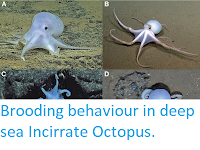Belemnites were Squid-like Cephalopod Molluscs that appeared in the Early Jurassic and survived until the End of the Cretaceous. Unlike modern Squid they had a mineralized internal skeleton, the rostrum, which is often found preserved as fossils. Many Belemnites were extremely numerous and wide-ranging, and the group had a high range of species turnover, making them very useful for biostratigraphers, scientists that date rocks by using their fossil content.
In a paper published in the Bulletin of Geosciences on 30 September 2017, Alexei Ippolitov of the Geological Institute of Russian Academy of Sciences, Alexander Berezin of the Chuvash Society of Archaeology and Natural History, Mikhail Rogov, also of the Geological Institute of Russian Academy of Sciences, and Bhawanisingh Desai of the Pandit Deendayal Petroleum University, describe a new species of Belemnite from the Late Jurassic Novikovo Formation of the Chuvashia Republic in Russia.
The new species is named Chuvashiteuthis aenigmatica, where 'Chuvashiteuthis' means 'Chuvashia-Squid' and 'aenigmatica' means 'an enigma'. The species is described from two complete rostra, 35.0 ans 28.6 mm in length, conical in shape with a distinct dorsal ridge. These are preserved as calcite, which is likely to have been the original material as aragonite is frequently preserved in the Novikovo Formation. This is important, as Belemnites, like other Mollusc groups apparently started out with aragonitic skeletons, then evolved more stable calcite skeletons several times independently, making understanding the mineralogy of Belemnite rostra important for understanding their affinities.
Chuvashiteuthis aenigmatica, from the Late Jurassic of Chuvashia. (A) first specimen in (A1) dorsal view; (A2) left lateral view; (A3) ventral view; (A4) cross-section at the apex; (A5) cross section at the anterior end; (A6) dorsal side of the alveolus, showing imprint of the proostracum); (B) Second specimen in (B1) dorsal view; (B2) right lateral view; (B3) ventral view; (B4) cross-section at the anterior end). Ippolitov et al. (2017).
Ippolitov et al. consider Chuvashiteuthis aenigmatica to be a Megateuthidid, a member of a group of Belemnites which died out at the end of the Bathonian Stage of the Middle Jurassic, about 168.3 million years ago. However the Novikovo Formation has been dated to the Late Kimmeridgian stage of the Late Jurassic, using Ammonites (another form of Mesozoic Cephalopod used in stratigraphy), i.e. about 157.3 million years old. If this assessment is correct then these specimens extend the known range of the Megateuthidids by around 11 million years.
See also...
Follow Sciency Thoughts on Facebook.







